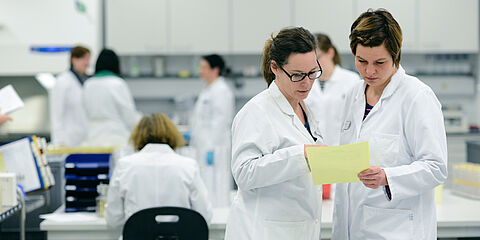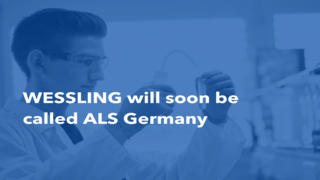Chlorate residues in food
By using water that has previously been treated with chlorinated substances in the various stages of food production, chlorate can enter either fruit or vegetables. WESSLING analyses chlorate residues in plant and animal food products for food producing companies with regard to the recommended limit values in compliance with EU Regulation (EC) No. 396/2005.

WESSLING has many years of experience in the analysis of chlorate residues in plant and animal food products and successfully participates in external comparative laboratory tests every year. This analysis is conducted together with the analysis of perchlorate via LC-MS/MS.
In which kinds of food have chlorate residues been found?
Chlorate has been found in frozen vegetables, fruit juices, lettuce and herbs.
How does chlorate enter food?
Chlorate can occur as a by-product when chlorinated substances are used for cleaning or disinfection. If water that has previously been treated with chlorine-containing biocidal products for disinfection is then used for processes in food production, chlorate can enter into food. These processes include, for example:
- The glazing of frozen goods
- The dilution of juice concentrates
- The washing of herbs and lettuces
Chlorate can also enter food through the use of chlorinated irrigation water. Previously, chlorates were also used in pesticides and biocides. However, this use is now banned within the EU.
What are the guideline values for chlorate in food?
Currently, 0.01 mg/kg is the maximum amount permitted within EU Regulation (EC) No. 396/2005. The EU Commission has currently submitted a proposal to apply the following action values for food monitoring, on a transitional basis, for food of plant origin:
- Plant food products, excluding vegetables: 0.1 mg/kg
- Vegetables, excluding carrots: 0.25 mg/kg
- Carrots: 0.2 mg/kg
This proposal has not yet been accepted. Monitoring measures should therefore be based on toxicological risk assessment. To this end, the German Federal Institute for Risk Assessment (BfR) has proposed to use the daily value of 0.036 mg/kg body weight for both chronic and acute risk assessment.
Click here for more information on residue analysis at WESSLING.
Your contact person regarding analysis of chlorate residues in food
- Christina Witt
- +49 2505 89-633
- food@wessling.de




